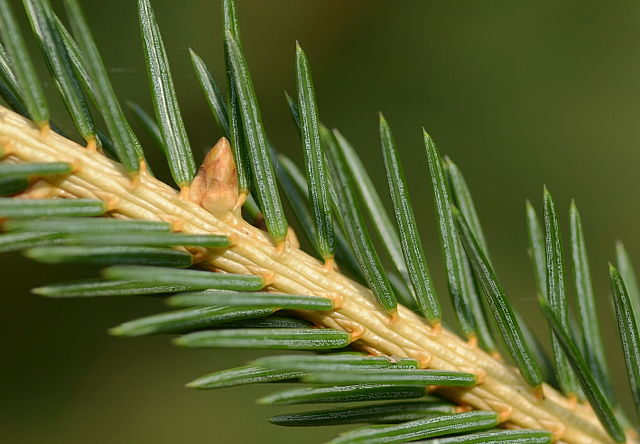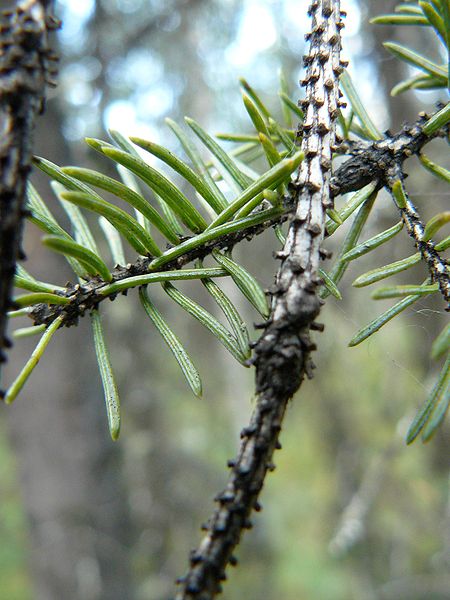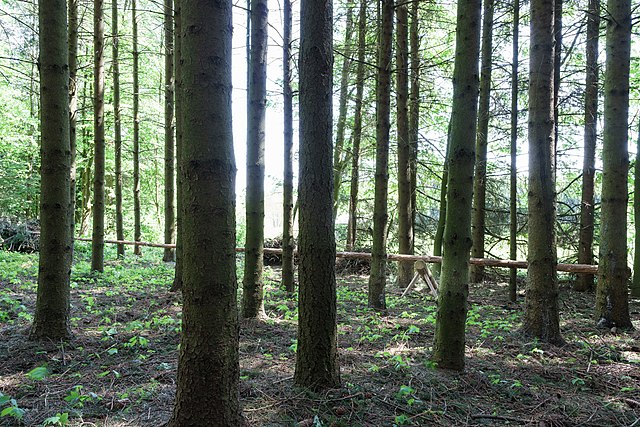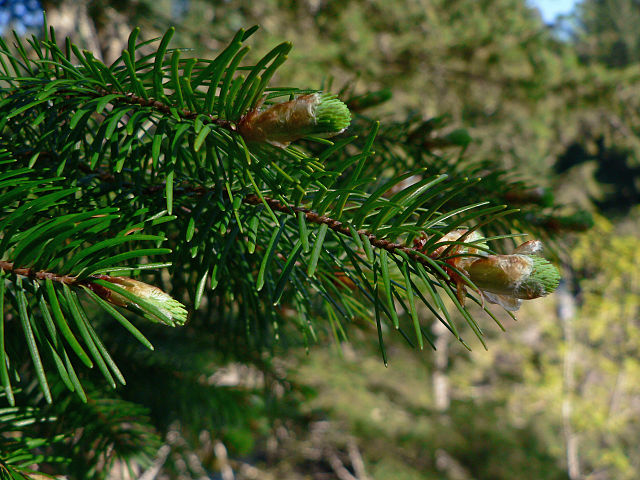A spruce is a tree of the genus Picea, a genus of about 40 species of coniferous evergreen trees in the family Pinaceae, found in the northern temperate and boreal (taiga) regions of the Earth. Picea is the sole genus in the subfamily Piceoideae. Spruces are large trees, from about 20 to 60 m tall when mature, and have whorled branches and conical form.
Spruce
The peg-like base of the needles, or pulvinus, in Norway spruce (Picea abies)
Pulvini remain after the needles fall (white spruce, Picea glauca)
Manually decorticated trunk of a spruce as protection against bark beetles
Conifers are a group of cone-bearing seed plants, a subset of gymnosperms. Scientifically, they make up the division Pinophyta, also known as Coniferophyta or Coniferae. The division contains a single extant class, Pinopsida. All extant conifers are perennial woody plants with secondary growth. The great majority are trees, though a few are shrubs. Examples include cedars, Douglas-firs, cypresses, firs, junipers, kauri, larches, pines, hemlocks, redwoods, spruces, and yews. As of 2002, Pinophyta contained seven families, 60 to 65 genera, and more than 600 living species.
Conifer
The narrow conical shape of northern conifers, and their downward-drooping limbs, help them shed snow.
Tāne Mahuta, the biggest kauri (Agathis australis) tree alive, in the Waipoua Forest of the Northland Region of New Zealand.
Pinaceae: needle-like leaves and vegetative buds of Coast Douglas fir (Pseudotsuga menziesii var. menziesii)








